DAVIDE CEDOLIN
THE ACOUSTIC SOUND OF EXISTENCE
di Giampiero Fleba
In cima alle colline liguri profumate di vita, davanti a un cerchio di pietre con un piccolo fuoco, sullo sfondo del cielo pronto a dissolversi nelle stelle. Dentro la copertina di “Embracing the Unknown”, nuovo album del chitarrista genovese Davide Cedolin. Dentro il suono di questo musicista poliedrico, dopo le esperienze post rock / ambient-elettroniche / world-cameristiche con Japanese Gum e TRÓNCO, nella sua attuale dimensione acustica avviata all’inizio del 2020 e ispirata dal prodigio e dalla meraviglia della natura. Una presenza nel ciclo della creatività folk visionaria che sta 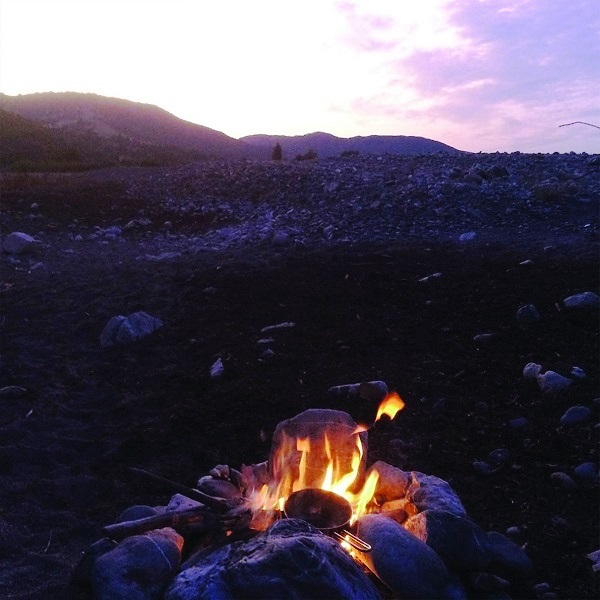 animando la musica underground e che Davide Cedolin esprime attraverso un flusso poetico di coscienza ambientale. Il respiro delle radici si espande con un soffio di magia folk blues irradiando note in un successivo rifiorire di arcobaleni e arie ricurve, tra riflessi minimali, psichedelia e intenso songwriting. Gemme di rugiada nelle avvolgenti soluzioni armoniche di tre mini album che sublimano in finissime iridescenze avant-psych-folk generate da “Embracing the Unknown”. Un album appassionante a cui collaborano diversi musicisti anche nel rivelare un mondo di relazioni e amicizie nel percorso artistico di Davide, nel suo racconto in una piacevole conversazione a partire da quando tutto ebbe inizio…
animando la musica underground e che Davide Cedolin esprime attraverso un flusso poetico di coscienza ambientale. Il respiro delle radici si espande con un soffio di magia folk blues irradiando note in un successivo rifiorire di arcobaleni e arie ricurve, tra riflessi minimali, psichedelia e intenso songwriting. Gemme di rugiada nelle avvolgenti soluzioni armoniche di tre mini album che sublimano in finissime iridescenze avant-psych-folk generate da “Embracing the Unknown”. Un album appassionante a cui collaborano diversi musicisti anche nel rivelare un mondo di relazioni e amicizie nel percorso artistico di Davide, nel suo racconto in una piacevole conversazione a partire da quando tutto ebbe inizio…
Qual’è il tuo background musicale?
(DC) Un passaggio fondamentale che mi ha formato a livello di educazione all’ascolto è stata la fortuna di vivere gli anni dell’adolescenza in una cittadina della riviera ligure, Varazze, che a quel tempo aveva un incredibile negozio di dischi indipendenti, Distorsioni. Luca (il proprietario) mi ha iniziato a tantissimi ascolti apparentemente scollegati che mano a mano col passare degli anni hanno intersecato e definito i miei gusti musicali. Frequentavo assiduamente quello che per me era diventato presidio culturale: i clienti e gli avventori, di vari stili e gusti musicali mi dettero accesso e mi introdussero ad ascolti molto eterogenei. La prima volta che entrai, i miei dischi preferiti erano: “Harvest” di Neil Young (ereditato in copia originale da mio padre), “Vitalogy” dei Pearl Jam che comprai in cassetta insieme a “Pet Sounds” dei Beach Boys e “Disintegration” dei Cure. Conobbi il punk, la new wave, il post hardcore, il noise, qualche anno andai in fissa con dub prima e shoegaze poi; ad un certo punto impazzii per i 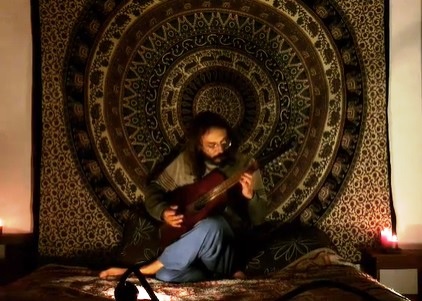 Sonic Youth, Jim O’Rourke, June of ’44, folk e musica acustica, il post rock e l’elettronica ambient fino a ricondurre il ciclo degli ascolti ad aree geografiche in periodi storici particolari, tornando alla musica acustica attraverso quella tradizionale; mi avvicinai a Jack Rose (via Pelt) prima e John Fahey successivamente in un momento in cui ero arrivato a saturazione di suoni super prodotti e molta elettronica. Da lì si aprirono moltitudini di possibilità e di nuove prospettive. La musica primitiva nordamericana è stata importantissima per sviluppare l’idea di suono che ho oggigiorno. È affascinante pensare quanto sia principalmente musica antica ad aver stimolato in me una tale rivoluzione viscerale, che mi ha portato a navigare a vista in oceani ignoti dove penso che il concetto di radicalismo acustico dovuto all’epoca, sia stato il reale e principale propulsore che mi ha guidato verso una certa visione.
Sonic Youth, Jim O’Rourke, June of ’44, folk e musica acustica, il post rock e l’elettronica ambient fino a ricondurre il ciclo degli ascolti ad aree geografiche in periodi storici particolari, tornando alla musica acustica attraverso quella tradizionale; mi avvicinai a Jack Rose (via Pelt) prima e John Fahey successivamente in un momento in cui ero arrivato a saturazione di suoni super prodotti e molta elettronica. Da lì si aprirono moltitudini di possibilità e di nuove prospettive. La musica primitiva nordamericana è stata importantissima per sviluppare l’idea di suono che ho oggigiorno. È affascinante pensare quanto sia principalmente musica antica ad aver stimolato in me una tale rivoluzione viscerale, che mi ha portato a navigare a vista in oceani ignoti dove penso che il concetto di radicalismo acustico dovuto all’epoca, sia stato il reale e principale propulsore che mi ha guidato verso una certa visione.
Come residente a Genova quanto hai colto dalle esperienze storiche di cantautori, gruppi o movimenti che ha espresso la tua città?
(DC) In tutta onestà non non sono un esperto delle varie esperienze storiche cantautorali locali, apprezzo Bindi così come alcuni lavori di De Andrè, senza essere un grande conoscitore in generale di cantautorato italiano. Di contemporanei cito volentieri Enrico Bosio degli Enroco, di cui amo lo stile asciutto e spigoloso di scrittura che ben si accompagna con il calore della voce.
Cosa ti ha spinto verso la chitarra acustica?
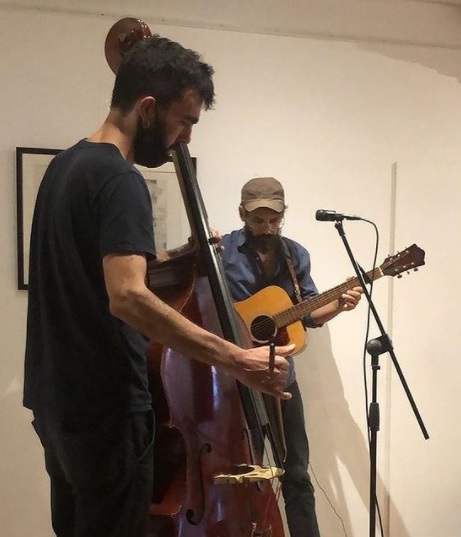 (DC) La necessità di arrivare al fuoco dell’interesse, stabilire un rapporto diretto, concreto e sincero con quello che avevo attorno. Volevo che la mia vita musicale combaciasse a quella regolare di tutti i giorni e viceversa. Il vivere in determinati luoghi per scelta mi ha portato ad abbracciarne l’essenza, ad allontanarmi dalla frenesia, dalle ansie, e a connettermi con l’ambiente circostante. Ovunque cammini, immagino sempre una colonna sonora. Cerco di riprodurla il più possibile in modo fedele.
(DC) La necessità di arrivare al fuoco dell’interesse, stabilire un rapporto diretto, concreto e sincero con quello che avevo attorno. Volevo che la mia vita musicale combaciasse a quella regolare di tutti i giorni e viceversa. Il vivere in determinati luoghi per scelta mi ha portato ad abbracciarne l’essenza, ad allontanarmi dalla frenesia, dalle ansie, e a connettermi con l’ambiente circostante. Ovunque cammini, immagino sempre una colonna sonora. Cerco di riprodurla il più possibile in modo fedele.
Quali sono i tuoi chitarristi o musicisti / gruppi di riferimento? Con quali chitarre suoni?
(DC) Ho dei riferimenti di vari, alcuni di tipo immaginario, altri tecnici od emotivi. Per esempio amo le abilità di William Tyler nel dipingere scenari espressionisti nei suoi brani, molto visivo. Ho seguito recentemente un suo workshop dal titolo “Cosmic Pastoral Guitar”, l’ho trovato molto interessante per come è stato affrontato il concetto di immaginario sonoro. Nella mia idea di suono, viene prima la suggestione seguita dall’atmosfera, alla fine la struttura. Steve Gunn è stato cruciale per me, per come durante il suo percorso sia riuscito a risolvere gli equilibri e i dilemmi tra canzone ed improvvisazione. Credo sia importante mantenere l’attenzione sull’obiettivo finale, nel mio caso l’atmosfera; dentro le cose possono essere arrangiate in infiniti modi diversi, ma è l’atmosfera l’elemento che personalmente reputo imprescindibile. Ryley Walker è incredibile per come riesce ad essere umile nell’arrangiamento nonostante sia in possesso di una tecnica devastante; trovo adorabile Yasmin Williams la per la sua dolcezza armonica oltre che per la bravura. Aggiungo Daniel Bachman e Gwennifer Raymond per la potenza di suono e le performance furiose e selvagge. Ho da tanti anni una Fender acustica elettrificata di non grande qualità che è stata però la mia fedele compagna dalla fine del liceo. L’anno scorso ho invece acquistato quella che con ogni probabilità sarà la chitarra della vita, una Guild D-35 del ’73.
La tua musica trae grande ispirazione dalla Natura, parlami di questa comunione artistica, del suo percorso creativo. Come definiresti la tua musica?
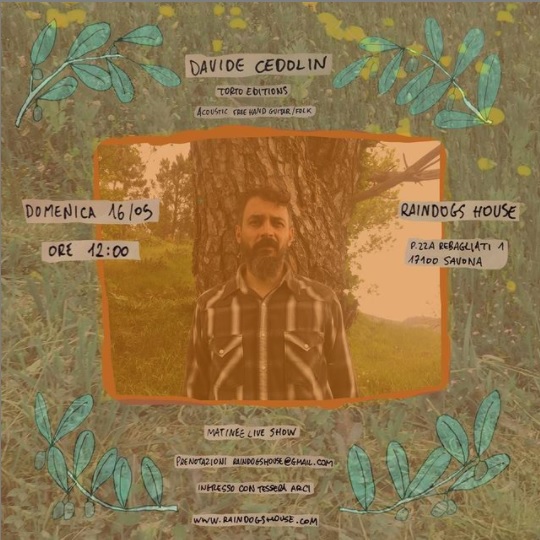 (DC) Posso affermare che ne sia debitore totalmente. Non fosse stato per i limiti tecnologici meravigliosi che si hanno a suonare in un bosco o in riva ad un fiume, la mia musica sarebbe nata e si sarebbe sviluppata secondo altri presupposti. Quello che mi sono prefisso è stato di fare musica che possa avere un’autonomia acustica. Poter suonare ovunque senza preoccuparmi di cavi, alimentatori, ampli, etc, è stata la più grande conquista che ho ottenuto da quando suono. Sembra banale, ma avendo suonato musica prevalentemente elettronica fino a cinque anni fa, questo risvolto è stato il più importante nel determinare il mio percorso. Volevo essere onesto nel senso puro del termine e far coincidere il mio stile di vita con la musica che facevo. Non mi andava di passare le giornate nei campi, al fiume, nei boschi e poi dovermi chiudere in uno spazio compresso fatto di cavi, led e prese. Volevo che emergesse il senso dell’esistenza, non un’estetica preconfezionata. Sono convinto che sia importante far coincidere le proprie idee con i fatti, la propria coscienza con l’immagine che gli altri hanno di noi, perché è quella che noi diamo loro; non amo le ambiguità intellettuali, le trovo una paraculata borghese utile a non assumersi la responsabilità di quello che si dice o si crea.
(DC) Posso affermare che ne sia debitore totalmente. Non fosse stato per i limiti tecnologici meravigliosi che si hanno a suonare in un bosco o in riva ad un fiume, la mia musica sarebbe nata e si sarebbe sviluppata secondo altri presupposti. Quello che mi sono prefisso è stato di fare musica che possa avere un’autonomia acustica. Poter suonare ovunque senza preoccuparmi di cavi, alimentatori, ampli, etc, è stata la più grande conquista che ho ottenuto da quando suono. Sembra banale, ma avendo suonato musica prevalentemente elettronica fino a cinque anni fa, questo risvolto è stato il più importante nel determinare il mio percorso. Volevo essere onesto nel senso puro del termine e far coincidere il mio stile di vita con la musica che facevo. Non mi andava di passare le giornate nei campi, al fiume, nei boschi e poi dovermi chiudere in uno spazio compresso fatto di cavi, led e prese. Volevo che emergesse il senso dell’esistenza, non un’estetica preconfezionata. Sono convinto che sia importante far coincidere le proprie idee con i fatti, la propria coscienza con l’immagine che gli altri hanno di noi, perché è quella che noi diamo loro; non amo le ambiguità intellettuali, le trovo una paraculata borghese utile a non assumersi la responsabilità di quello che si dice o si crea.
Le problematiche ambientali ci fanno capire come non sia più possibile ignorare che la Natura e l’ambiente sono la nostra esistenza. Come vedi la possibilità di una rivalutazione culturale nel rapporto con gli altri esseri senzienti del mondo animale e vegetale di questo pianeta? Pensi che i movimenti ambientalisti di oggi (il Fridays For Future di Genova è tra i più attivi in Italia) riescano a fare breccia nelle coscienze dei giovani?
(DC) Ho abbracciato la scelta vegetariana da sei anni circa con regolarità ed integralismo, prima lo ero stato già per una decina con morbidezza e diversi momenti di pausa. La differenza l’ha fatta la motivazione guida. In età giovanile ero mosso da motivazioni politiche prima e salutistiche in 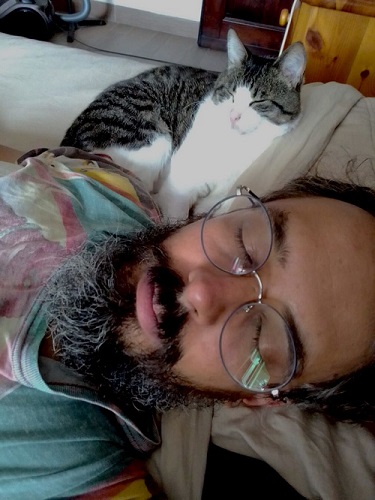 secondo luogo, ma non avevo mai vissuto a contatto con animali non da appartamento. Ho vissuto con una capra ed una pecora, attualmente sono a contatto con asini, oltre agli animali selvatici ed il mio totem, Mythos, che è un gatto nato in appartamento e rinselvatichito negli anni. Ho conosciuto sufficientemente gli animali per capire che mangiare un pollo ma non un cane, è in un certo qual modo una scelta classista, che non nobilita la persona. Come allevare animali in modo “etico” o “sostenibile”.. si tratta di tradimento nei confronti di esseri viventi che vengono ingannati, le cure amorevoli che ricevono sono palliativi di una fine prestabilita. Credo sia importante essere consapevoli delle proprie scelte, siamo le scelte che facciamo e visto che si sbaglia sempre nella vita, tanto vale farlo stando bene con la propria coscienza senza dare adito a principi necessariamente universali. Credo che sia basilare riuscire ad essere onesti nell’esporsi senza edulcorare la realtà, anche se il marketing può portare a non pensare che un hamburger sia un pezzo di vacca e che il prosciutto sia coscia di maiale. Anche l’agricoltura intensiva e le monocolture sono un problema serio, in una visione ambientale d’insieme, al pari della dieta onnivora. Certe tecniche di coltivazione, anche se biologiche, prevedono operazioni devastanti sull’ambiente, come i disboscamenti delle foreste pluviali per creare sterminati campi di quinoa. Ci sono tanti modelli possibili, ma se vogliamo ambire ad un benessere naturale ed ambientale ne esiste uno solo, che non dovrebbe neppure essere raccontato né spiegato teoricamente.
secondo luogo, ma non avevo mai vissuto a contatto con animali non da appartamento. Ho vissuto con una capra ed una pecora, attualmente sono a contatto con asini, oltre agli animali selvatici ed il mio totem, Mythos, che è un gatto nato in appartamento e rinselvatichito negli anni. Ho conosciuto sufficientemente gli animali per capire che mangiare un pollo ma non un cane, è in un certo qual modo una scelta classista, che non nobilita la persona. Come allevare animali in modo “etico” o “sostenibile”.. si tratta di tradimento nei confronti di esseri viventi che vengono ingannati, le cure amorevoli che ricevono sono palliativi di una fine prestabilita. Credo sia importante essere consapevoli delle proprie scelte, siamo le scelte che facciamo e visto che si sbaglia sempre nella vita, tanto vale farlo stando bene con la propria coscienza senza dare adito a principi necessariamente universali. Credo che sia basilare riuscire ad essere onesti nell’esporsi senza edulcorare la realtà, anche se il marketing può portare a non pensare che un hamburger sia un pezzo di vacca e che il prosciutto sia coscia di maiale. Anche l’agricoltura intensiva e le monocolture sono un problema serio, in una visione ambientale d’insieme, al pari della dieta onnivora. Certe tecniche di coltivazione, anche se biologiche, prevedono operazioni devastanti sull’ambiente, come i disboscamenti delle foreste pluviali per creare sterminati campi di quinoa. Ci sono tanti modelli possibili, ma se vogliamo ambire ad un benessere naturale ed ambientale ne esiste uno solo, che non dovrebbe neppure essere raccontato né spiegato teoricamente.
Le nuove generazioni sono sicuramente più disilluse, hanno dalla loro la possibilità di scegliere come formare le proprie sensibilità e di informarsi maggiormente, e fortunatamente le cose si stanno muovendo bene in questo senso. Tuttavia, la tendenza politica bi-polaristica si accentua proprio nelle nuove generazioni, c’è una tendenza a radicalizzare i principi per creare delle macro aree culturali di appartenenza. Certi paradigmi economici stanno 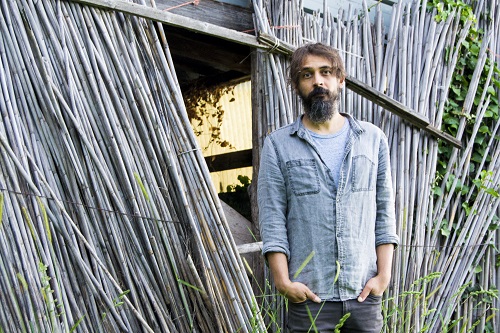 crollando ma vengono fatti sopravvivere da altre nuove forme di conservatorismo antropocentrico. Temo che l’unica variabile che potrebbe diventare discriminante in senso collettivo e politico sia quella economica. Quando non sarà più conveniente estrarre petrolio, o quando mangiare sano non verrà più associato allo status quo della dieta onnivora, probabilmente ci potrà essere un’onda verde, che sarà indubbiamente a sua volta soggetta a strumentalizzazioni e speculazioni se il sistema capitalista dovesse sopravviverne in qualche modo. Quando si capirà che riciclare ha dei costi, e riusare no, probabilmente si creeranno nuove economie più circolari. Ma smuovere coscienze collettive e sistemi economici richiede tempo. Siamo ancora ancorati ad un capitalismo deforme e ciondolante come unica alternativa maggioritaria ad un governo non democratico. Dovremo fare ancora parecchia strada, ma il fatto che se ne parli sempre di più, è rincuorante.
crollando ma vengono fatti sopravvivere da altre nuove forme di conservatorismo antropocentrico. Temo che l’unica variabile che potrebbe diventare discriminante in senso collettivo e politico sia quella economica. Quando non sarà più conveniente estrarre petrolio, o quando mangiare sano non verrà più associato allo status quo della dieta onnivora, probabilmente ci potrà essere un’onda verde, che sarà indubbiamente a sua volta soggetta a strumentalizzazioni e speculazioni se il sistema capitalista dovesse sopravviverne in qualche modo. Quando si capirà che riciclare ha dei costi, e riusare no, probabilmente si creeranno nuove economie più circolari. Ma smuovere coscienze collettive e sistemi economici richiede tempo. Siamo ancora ancorati ad un capitalismo deforme e ciondolante come unica alternativa maggioritaria ad un governo non democratico. Dovremo fare ancora parecchia strada, ma il fatto che se ne parli sempre di più, è rincuorante.
Curiosità: nella tua musica ho notato che non ci sono particolari riferimenti al mare, elemento vitale nella geografia ligure. O mi è sfuggito qualcosa?
(DC) E’ una cosa a cui ho pensato anch’io diverse volte. In realtà è casuale che faccia pochi riferimenti al mare tra i miei brani; mi vengono però in mente ‘Light Blue Rocks’ che immagina l’impatto delle onde sulle rocce turchine liguri come metafora della ciclicità, di come le cose spesso cambiano per rimanere le stesse oppure ‘An Echo’, che con i tonfi dei container del porto al tramonto mi ricorda la vicinanza al mare anche in una zona collinare. 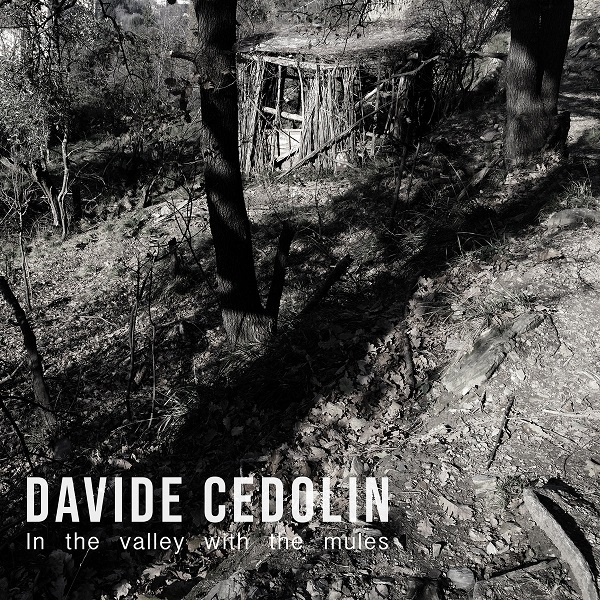 Il mare è un protagonista naturale e legittimo della Liguria, e nei miei intenti c’è quello di tributarlo in futuro, maggiormente.
Il mare è un protagonista naturale e legittimo della Liguria, e nei miei intenti c’è quello di tributarlo in futuro, maggiormente.
Parliamo dei tuoi lavori pubblicati su bandcamp. “In the Valley with the Mules” espande temi folk-blues con una precisa impostazione stilistica dinamica aperta. C’è un luogo, una dimensione, dei musicisti che lo hanno ispirato?
(DC) Lo scorso anno verso inizio aprile mi resi conto che il disco al quale stavo lavorando (“Embracing The Unknown”) a causa del primo lockdown avrebbe vissuto rallentamenti non quantificabili. A quel punto decisi di fare uscire un EP che potesse avere immediatezza di realizzazione. A fine mese per il compleanno, la mia compagna mi regalò un registratore Zoom H5, che tutt’ora è la mia sorgente di ripresa domestica e di field recordings, che mi permise di concretizzare. Sono quattro composizioni che sono dei collage di giri e riff scritti senza una struttura di canzone. Dopo, le parole e le melodie cantate le hanno inquadrate.
Le ispirazioni provengono da Fred Neil, Sandy Bull, Jackson C. Frank e ovviamente John Fahey.
Alla fine del 2020 realizzi “Season Creep” dove sviluppi sonorità più rarefatte. Un procedere lento e avvolgente, un perdersi in placida solitudine. Raccontami di questo lavoro…
 (DC) “Season Creep” si è creato da sé, i pezzi sono venuti molto naturalmente, li ho scritti e registrati in qualche giorno, non volevano essere un EP inizialmente, ma al termine del mix mi sembravano omogenei e complementari, quindi li ho raccolti insieme.
(DC) “Season Creep” si è creato da sé, i pezzi sono venuti molto naturalmente, li ho scritti e registrati in qualche giorno, non volevano essere un EP inizialmente, ma al termine del mix mi sembravano omogenei e complementari, quindi li ho raccolti insieme.
Il mood del disco è malinconico, l’autunno inoltrato ha luci tenui, l’aria inizia ad essere fredda e umida, i boschi si spogliano e le giornate si accorciano.. credo che anche il titolo in un certo senso lo definisca implicitamente, il creep stagionale è come l’anticipazione della stagione seguente, in questo caso l’inverno. La solitudine ha un ambivalenza forte. Si può detestare e fuggirla come necessitarla e bramarla. Si può anche assisterne le evoluzioni aspettando, senza giudizio, e cercare di usarla.
Come una volta mi disse un caro amico che non c’è più, riguardo la musica del suo gruppo: “Mi piace che ci sia come un sorriso nell’ombra”.
All’inizio del 2021 esce Guitar Meditations “In C”, un altro notevole mini album che realizzi in compagnia di Tito Ghiglione. I temi rarefatti del lavoro precedente entrano in una dimensione contemplativa minimalista evocata a quattro mani in un reiterante fluire di corde. Emerge chiaro l’omaggio a Terry Riley anche nella ricerca sulle qualità spirituali che una forma d’arte possa incarnare…
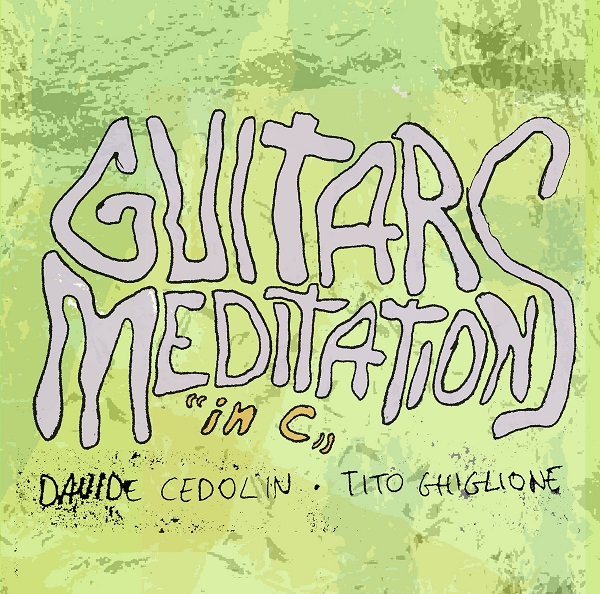 (DC) Questo album è composto da quattro estrapolati di un’operazione musicale diversa rispetto alle precedenti. Sono tutte improvvisazioni, che hanno documentato un momento specifico, in cui l’interazione tra i due interpreti si è creata appositamente ed ha avuto vita nell’estemporanea del momento. Terry Ryley è omaggiato per la tonalità di esecuzione prevalentemente. Amo creare dialoghi estemporanei con lo strumento, sia in solitaria, sia in compagnia. Ho avuto esperienze simili anche se non pubblicate o registrate, in contesti non domestici, in una galleria d’arte, a distanza, e con altri musicisti come Tommaso Rolando e Paolo Tortora. Lo ritengo un ottimo esercizio di concentrazione/perdizione, entrare in contatto con il presente che accade, specialmente con altre persone coinvolte quando possibile, è molto simile allo stato meditativo, in cui sparisce tutto, pensieri, emozioni, immagini, passato, futuro: nella meditazione ci si aggrappa in un certo senso al vuoto come spazio, in questo caso invece è lo spazio del suono l’unica verità a cui ci si può aggrappare.
(DC) Questo album è composto da quattro estrapolati di un’operazione musicale diversa rispetto alle precedenti. Sono tutte improvvisazioni, che hanno documentato un momento specifico, in cui l’interazione tra i due interpreti si è creata appositamente ed ha avuto vita nell’estemporanea del momento. Terry Ryley è omaggiato per la tonalità di esecuzione prevalentemente. Amo creare dialoghi estemporanei con lo strumento, sia in solitaria, sia in compagnia. Ho avuto esperienze simili anche se non pubblicate o registrate, in contesti non domestici, in una galleria d’arte, a distanza, e con altri musicisti come Tommaso Rolando e Paolo Tortora. Lo ritengo un ottimo esercizio di concentrazione/perdizione, entrare in contatto con il presente che accade, specialmente con altre persone coinvolte quando possibile, è molto simile allo stato meditativo, in cui sparisce tutto, pensieri, emozioni, immagini, passato, futuro: nella meditazione ci si aggrappa in un certo senso al vuoto come spazio, in questo caso invece è lo spazio del suono l’unica verità a cui ci si può aggrappare.
Oggi esce il tuo nuovo album “Embracing the Unknown” in digital download e a Settembre su vinile pubblicato da Torto Editions e Marsiglia Records. Ancora una novità nel suono sviluppato in compagnia di una vera e propria band. Parlami dell’idea che lo ha ispirato, dei musicisti, delle etichette, delle sintonie nello sviluppare il percorso creativo di questo lavoro…
(DC) I pezzi di “Embracing The Unknown” sono stati scritti a cavallo tra 2019 ed inizio 2020 con l’idea di realizzare un disco acustico, con prevalenza di chitarre acustiche e voce, con pochi fronzoli ed arrangiamenti. Ma le cose vanno fatte respirare di vita propria, e gradualmente, partendo dai  contributi di registrazione di Tommaso Rolando che poi si sono ampliati ad alcune parti di contrabbasso ed organo per un paio di brani, ho iniziato a visualizzare i brani in modo diverso, in un insieme di sound che potesse caratterizzare in modo più preciso e strutturato le canzoni. Conseguentemente ho pensato che con dei bassi presenti avrebbe avuto senso avere delle ritmiche di batteria e non solo qualche percussione, così sono entrato in contatto con Ryan Jewell che si è dimostrato entusiasta di lavorare al disco. Poi sono arrivate le chitarre elettriche, che volevo fossero caratterizzanti degli ambienti e dei mood. Paolo Tortora è stata la prima persona a cui ho pensato per questo, lo conosco da tanti anni e sono un fan della sua ricerca continua a livello di soundscape. Ha creato le condizioni “metereologiche” del disco. Successivamente sono arrivate la freschezza del clarinetto di Tito Ghiglione, l’organicità del piano elettrico di Rocco Pietro Spigno, le campane oniriche di Caterina Rolando e i suoni casuali di Mythos che ho deciso di mantenere nel mixaggio. Torto Editions è un’etichetta genovese di cui Tommaso è il deus ex-machina. Intorno a lui siamo un po’ di persone coinvolte che supportano il lavoro. Il focus della label è su musica sperimentale, ma non necessariamente. C’è un’idea trasversale alla base del progetto, ci sono elementi comuni in tutte le uscite, anche se molte non si assomigliano. Lo trovo bellissimo. Anche Marsiglia Records è genovese ed è curata da Matteo Casari. E’ una etichetta
contributi di registrazione di Tommaso Rolando che poi si sono ampliati ad alcune parti di contrabbasso ed organo per un paio di brani, ho iniziato a visualizzare i brani in modo diverso, in un insieme di sound che potesse caratterizzare in modo più preciso e strutturato le canzoni. Conseguentemente ho pensato che con dei bassi presenti avrebbe avuto senso avere delle ritmiche di batteria e non solo qualche percussione, così sono entrato in contatto con Ryan Jewell che si è dimostrato entusiasta di lavorare al disco. Poi sono arrivate le chitarre elettriche, che volevo fossero caratterizzanti degli ambienti e dei mood. Paolo Tortora è stata la prima persona a cui ho pensato per questo, lo conosco da tanti anni e sono un fan della sua ricerca continua a livello di soundscape. Ha creato le condizioni “metereologiche” del disco. Successivamente sono arrivate la freschezza del clarinetto di Tito Ghiglione, l’organicità del piano elettrico di Rocco Pietro Spigno, le campane oniriche di Caterina Rolando e i suoni casuali di Mythos che ho deciso di mantenere nel mixaggio. Torto Editions è un’etichetta genovese di cui Tommaso è il deus ex-machina. Intorno a lui siamo un po’ di persone coinvolte che supportano il lavoro. Il focus della label è su musica sperimentale, ma non necessariamente. C’è un’idea trasversale alla base del progetto, ci sono elementi comuni in tutte le uscite, anche se molte non si assomigliano. Lo trovo bellissimo. Anche Marsiglia Records è genovese ed è curata da Matteo Casari. E’ una etichetta 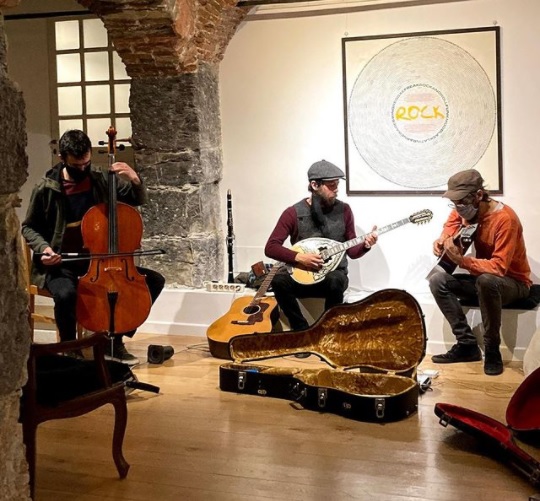 longeva che tratta una vasta gamma di musica, con un occhio speciale sulle novità locali.
longeva che tratta una vasta gamma di musica, con un occhio speciale sulle novità locali.
Una dimensione elettroacustica accende dinamiche fantastiche psych folk specialmente in canzoni come ‘Loosey’, ‘Destination Unknown’, ‘An Echo’ e ‘Vanishing Sky’. Inni alla bellezza della natura, al perdersi di fronte al mistero. Parlami di questa svolta ‘psichedelica’ del tuo suono. Qualcosa a cui ti sei ispirato o che era già in svolgimento?
(DC) Il sound psichedelico era in un certo senso già presente nell’intenzione precedentemente, ovviamente al momento del realizzarsi della possibilità di lavorare con altri, ho pensato alle persone in base alle loro caratteristiche, e a che tipo di arrangiamento ed impronta volevo dare al disco. Come già ti dicevo prima, volevo che ci fosse un’atmosfera ben precisa, è l’unica cosa che avevo in mente da quando il lavoro è diventato corale. Ho voluto dare rilievo alle chitarre acustiche e alle voci, ma allo stesso tempo volevo che dondolassero in equilibrio con gli altri strumenti. Per cui l’ambiente psichedelico si è creato dalle pieghe dei pezzi in modo spontaneo, diciamo che c’era spazio per certi arrangiamenti e certe scelte che quindi sono risultate logiche alle mie orecchie. Ho rispetto verso l’ignoto, il mistero, ma ne sento grande attrazione. ‘Destination Unknown’ è un po’ la summa di questi concetti. ‘Loosely’ è serena nel suo andare, disillusa e pacifica. ‘An Echo’ viaggia su binari sgangherati, ha una traiettoria, ma deviata in continuazione. ‘Vanishing Sky’ è un pezzo di genere se vogliamo, e mette in gioco alcuni stereotipi della vita agreste e rilassata.
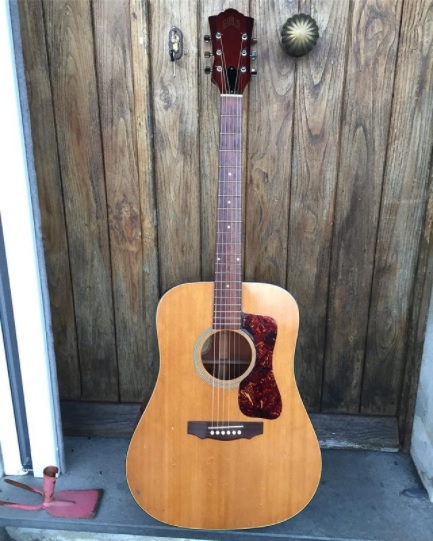 Molto bella anche l’unica presenza acustica strumentale che in qualche modo si collega ai tuoi precedenti lavori: ‘Silver Pines’ percorsa da un field recording di cicale. Dov’è questa pineta, rappresenta qualcosa per te? Hai registrato anche la chitarra all’aperto magari sotto i pini?
Molto bella anche l’unica presenza acustica strumentale che in qualche modo si collega ai tuoi precedenti lavori: ‘Silver Pines’ percorsa da un field recording di cicale. Dov’è questa pineta, rappresenta qualcosa per te? Hai registrato anche la chitarra all’aperto magari sotto i pini?
(DC) ‘Silver Pines’ prende il nome da una piccola collinetta con un prato vicino a casa dove ci sono dei bellissimi pini argentati ad ombreggiare. E’ un luogo in cui sto particolarmente bene, su un crinale dove a sud est si può vedere il mare e a nord-ovest i monti dell’Appennno. Le cicale sono state registrate con l’H5 in loco, la chitarra, per questioni di praticità l’ho registrata a casa, nell’ambiente giorno dove ho effettuato tutti gli home recording.
‘Rites Under the Moon’, ‘Woke’, ‘Silence’ e ‘Undust’ abbracciano sonorità più pastorali, avvolte da sviluppi intensi dove emergono percussioni ovattate, fiati, vocals distese, tastiere, mini-sinfonie Atom Heart Mother, incanti Opal-escenti, variazioni folk visionarie di grande suggestione. Parlami di queste canzoni…
(DC) I primi due brani che hai menzionato sono i primi che ho registrato del disco, e in un certo senso quelli che sento forse più lontani da come scrivo ora, ma allo stesso tempo ci sono molto legato. ‘Silence’ è l’ultimo pezzo scritto per l’album, ed è probabilmente il mio preferito, anche per il testo. Ha spazialità, circolarità, un tema principale che suonando con la band a volte si protrae per ore, come un loop molto lungo. E’ l’essenza del pezzo che prende piede sulla sua stessa forma. ‘Undust’ è il brano che tramite la tonalità ricongiunge il finale di “Embracing The Unknown” a ‘Loosely’, il primo. Mi piaceva l’idea di creare questo gioco di rimandi, e di moto perpetuo. Se ascolti ‘Undust’ e successivamente ‘Loosely’, questa ti sembrerà costruirsi poco a poco sulle ceneri di quella prima.
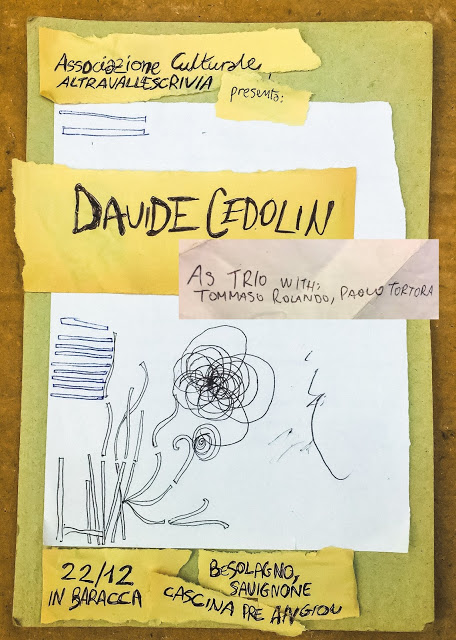 Ora ci gustiamo “Embracing the Unknown” e poi che succede nel futuro musicale di Davide Cedolin, farai concerti?
Ora ci gustiamo “Embracing the Unknown” e poi che succede nel futuro musicale di Davide Cedolin, farai concerti?
(DC) Nella mia routine c’è sempre spazio per suonare, e sto già registrando cose nuove per vari progetti. Attualmente sto iniziando a lavorare alla colonna sonora per un documentario sul Parco del Beigua, recentemente passato alla cronaca per le truci prospettive della giunta Toti, che vuole sfruttare il titanio presente nelle montagne e quindi trivellare un parco naturale. Ho qualche data estiva sia in solo sia con band, poi a settembre nascerà il mio primo figlio, successivamente quando sarò un po’ più libero, riprenderò l’attività live.
Photo by courtesy of Davide Cedolin
DISCOGRAFIA
“In The Valley With The Mules” (Bandcamp download, 2020)
“Season Creep” (CD & Bandcamp download, 2020)
Guitar Meditations “In C” (Bandcamp download, 2021)
“Embracing The Unknown” (LP & download, Torto Editions / Marsiglia Records, 2021)

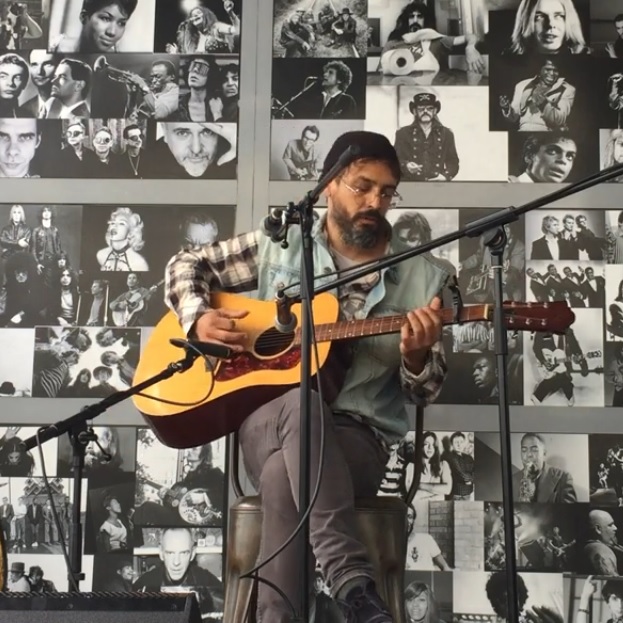
English translation…
DAVIDE CEDOLIN
THE ACOUSTIC SOUND OF EXISTENCE
by Giampiero Fleba
On top of the Ligurian hills perfumed with life, in front of a circle of stones with a small fire, against the backdrop of the sky ready to dissolve into the stars. Inside the cover of “Embracing the Unknown”, the new album by the Genoese guitarist Davide Cedolin. Inside the sound of this multifaceted musician, after the post-rock ambient-electronic experiences with Japanese Gum and TRÓNCO, in its current acoustic dimension launched at the beginning of 2020 and inspired by the prodigy and wonder of nature. A presence in the cycle of visionary folk creativity that is livening up underground music and that Davide Cedolin expresses through a poetic flow of environmental awareness. The breath of the roots expands with a yearning of folk blues magic, radiating notes in a subsequent flourishing of rainbows and curved airs, between minimal reflections, psychedelia and intense songwriting. Gems of dew in the enchanting harmonic solutions of three mini albums that sublimate in very fine avant-psych-folk iridescences generated by “Embracing the Unknown”. An exciting album to which several musicians collaborate also in revealing a world of relationships and friendships in Davide’s artistic path, in his tale along a pleasant conversation starting from when it all began…
Which is your music background?
(DC) A fundamental passage that shaped me as a listener, I was that lucky to live my teen years in a small town of the Ligurian Riviera, Varazze, where there was an astonishing independent record shop, Distorsioni. Luca (the owner) initiated me to many listens that were apparently unconnected but intersected and defined my tastes by years. I was a big attender of what became to me a cultural safeguard: clients and regulars of diverse styles gave me the access to miscellaneous listens and multiple inputs. First time I came in the shop, my preferred records were: “Harvest” by Neil Young (given from my father) on vinyl, “Vitalogy” by Pearl Jam and “Pet Sounds” by Beach Boys on tape, plus “Disintegration” from The Cure on CD. I discovered punk, hardcore, noise, I became obsessed earlier with dub and then with shoegaze; at some point I started raving for Sonic Youth, Jim O’Rourke, folk and acoustic music, post-rock and ambient-electronica towards to trace back the cycle of my listens to geographic areas in specific historical periods, back to acoustic music thanks to traditional music. I got close to Jack Rose (via Pelt) first and John Fahey after, in a moment I was saturated by over productions and most of electronic music. From there tons of possibilities and new perspectives opened.
North American primitive music played a big role in the vision of the sound I currently have. It’s mesmerizing thinking about it’s the ancient music, the main stimulation of such a visceral revolution, that guided me to sail by sight in unknown oceans where acoustic radicalism due its era has been the main booster that bring me to a certain vision.
As genovese resident, what did you pick from the historical songwriters experiences, groups or movements that your city had?
(DC) In all honesty, I’m not an expert on the various historical local songwriting experiences, I appreciate Bindi as well as some of De Andrè’s works, without being a great connoisseur of Italian songwriting in general. About contemporary Genovese songwriters, I gladly quote Enrico Bosio from Enroco, I love his essential and edgy songwriting that goes well with the warmth of his voice.
What made you move to acoustic guitar?
(DC) The need to reach the focus of my interest, establish a direct relationship, concrete and sincere with what was around me. I wanted that my musical life could match with my daily life and viceversa. Living in a specified place on purpose took me to embrace its essence, taking distance from bustle, anxiety and connect with the environment. Wherever I walk I imagine a soundtrack. I try to reproduce it as closely as possible.
Which are your reference guitarists/artists? Which guitars do you play?
(DC) I have various references, some about the imaginary, some other about technique, or emotivity.
For example I love the skills that William Tyler has painting expressionist tableau in his compositions, very visual. I’ve recently participated to his workshop “Cosmic Pastoral Guitar”, it has been really interesting for how the imaginary concept has been discussed. In my idea of sound, first comes the suggestion, then the atmosphere, in the end the structure.
Steve Gunn has been crucial for me, because along the path, he found his own way to solve dilemmas and balances between songs and improvisations. I believe it’s important to keep the focus on the final goal, in my case the atmosphere; in the between, things can be arranged in so many ways, but the element I consider inescapable is the atmosphere. Ryley Walker is incredible because of his humility into arranging regardless his devastating technique; I adore the sweetness in the harmonies of Yasmin Williams besides for her skill. I’ll add Daniel Bachman and Gwennifer Raymond as well for the power of their sounds and their furious and wild live performances.
I own a cheap electrified acoustic Fender since the end of the high school. Last year I’ve bought what will 99% be the guitar of my life, a Guild D-35 from the ‘73.
Your music takes big inspiration from the nature, tell me about this artistic communion, about its creative process. How would you define your music?
(DC) I can affirm that my music totally owes nature. If not because of the wondrous technologic limits that playing in the woods or along a creek have, my music would had born and developed by other assumptions. What I have set was playing music that could have an acoustic viability. Having the chance to play anywhere without matters about cables, power supplies, amps, etc, has been the biggest conquest I achieved since I started playing. It seems trivial, but since I’ve mostly played electronic until five years ago, this lapel has been the most important into determining my path. I wanted to be honest in the pure meaning of the term and match my life style with the music I was playing. I didn’t want to spend my days in the fields, at the creek, in the woods and then close myself in a compressed space made of cables, led and plugs. I wanted that the sense of the existence could emerge, not a planned aestethic. I believe it’s important matching ideas with facts, the conscience with the image that people have of us, because the image is what we give to people; I don’t like intellectual ambiguities, I think it’s bourgeois smart ass stuff good for not assuming the responsibility of what has been said or created.
Environmental problems make us understand that is not possible keep ignoring that the environment and the nature are our existence. How do you feel about the chance of a cultural revaluation of the connection with the other sentient beings of this planet? Do you think that the current green movements could break through young people’s awareness?
(DC) I regularly embraced the vegetarian choice since six years with integralism, before I’ve already intermittently been vegetarian for ten years. The difference has been the lead reasoning about. In the juvenile period I was moved by political and health matters, but I didn’t have experiences of living with outdoor animals. I lived with a goat and a sheep, currently having to deal with donkeys and feral animals and my totem, Mythos, that is a flat born cat that re-wilded himself by years. I’ve sufficiently knew animals to understand that eating a chicken and not a dog is a classist pick somehow, that doesn’t add credit to the person. Same as for breeding animal in an ethical and sustainable way.. this is about cheating the living beings that are deceived, the lovely cares that they get are the palliative of a preset final. I think it’s important to be conscious of our choosing, we are the choices we make and since we always go wrong sometimes, we might as well feel good with our conscience and don’t give rise to principles that must to be universal. I think it’s basically being honest into the exposition without sweetening the reality, even though the marketing can manipulate and don’t make you think that hamburgers aren’t pieces of cow and that ham is pork thigh. Even intensive agricolture and monocoltures are a serious issue, in an overall environmental view as much as an omnivorous diet. Certain cultivation techniques, even if organic approved, they foresee devastating operations, such as the logging of the pluvial forests to create endless quinoa fields. There are so many possible patterns, but if we want aspire to a natural and environmental wellness there’s only one pattern that shouldn’t neither be told nor explained. Newer generations are definitely more jaded than the previous ones, on their side they have the chance to choose how to grow their sensitivity and get more informations and luckily things are moving good in this way. However, the bi-polaristic political trend gets reinforced in new generations. There’s a tendency to radical sharpening the principles to create cultural macro areas of belonging. Certain economic paradigms are collapsing but they still survive thanks to new forms of anthropocentric conservatism. I’m afraid that the only variable that could be discriminative in a collectively and politically way could be the economic one. When extract petrol will be not convenient anymore, or when a healthy diet won’t be associated with the status quo of being omnivore, there will probably be a green wave, that will be undergo to exploitation and speculation if capitalism would somehow survive. When it will be clear that recycle has costs and reuse not, some new circular economics could happen. It takes time to reach collective consciousness and economic systems. We are still anchored to a dangling and warped capitalism as unique majoritarian alternative to a non-democratic government. The road is still long, but the thing that the environment is a hot topic is definitely heart warming.
Trivial question: your music doesn’t have particular references to the sea, a vital element in the Ligurian geography. Did I miss something?
(DC) It’s a thing I thought about several times. It’s actually random that happened to have just few references to the sea in my songs; it comes to my mind ‘Light Blue Rocks’ from “Season Creep” that guesses the waves impact on light blue rocks (typical stone you can find in the Turchino area) as metaphor of the cyclicity, as things often change to remain the same or ‘An Echo’, that reminds me how close I am to the sea even if I live in a rural area, by the thuds of the containers at the port at sunset. The sea is a natural and legitimate main character in Liguria, in my intentions there’s the idea to tribute the sea more often in the future.
Let’s talk about your bandcamp discography. “In the Valley with the Mules” widen folk-blues themes with a sharp and open dynamic style. Is there a place, a dimension, musicians that inspired the album?
(DC) Last year around early April I realized that the full-lenght I was working on (Embracing The Unknown) would have been not quantifiable delayed because of the first lockdown. At that point I decided to release an EP that could be easy to make.
At the end of the month, my partner gave me a Zoom H5 portable recorder for my birthday that is still my home recording and field recording set up, that allowed me to realize it. It has been made with four compositions that actually are collages of riffs that I wrote with no song structure. Afterwards, the words and the singing melodies shaped the songs.
Inspirations come from Fred Neil, Sandy Bull, Jackson C. Frank and obviously John Fahey.
At the end of 2020 you published “Season Creep” where you grow a more rarefied sound. A slow and gradual progress, as getting lost in a placid solitude. Tell me more about this album…
(DC) “Season Creep” has been generated by itself, tracks came naturally, I wrote and recorded them in a few days, there was no purpose for a new EP, but at the end of the mixing they appeared uniform and complementary, so I collected them together. The mood of the album is melancholic, late autumn has soft lights, the air starts to be cold and damp, woods undress and days get shorter.. I guess the title of the album defines itself, the season creep is like the forerunner of the next one, in this case winter. Solitude has a strong ambivalence. You can hate it and run from that or need and crave it. It’s even possible to simply assist the evolutions and wait, with no judgement, and try to use it. As a missing friend once said regarding his band: “I love the idea that there’s like a smile in the shadow”.
Early in 2021 the release of Guitar Meditations “In C”, another notable short album that you make with Tito Ghiglione. The rarefied themes of the previous EP go in a contemplative and minimalistic dimension evoked by the four hands in a reiterating flow of strings. A clear homage to Terry Ryley comes to light, in the spiritual research that art can embody also…
(DC) This album is made of four excerpts of a diverse musical operation compared to the previous ones. It’s all about improvisation that documented a specific moment, in which the interaction of the two performers has been suitably created and lived in the extemporaneity of the moment. The homage to Terry Riley is mainly for the key of the playing. I love creating extemporary dialogues with the instrument, in solo as accompanied. I had similar experiences (not released nor recorded) in non domestic zones, in an art gallery, from remote and with other musicians such Tommaso Rolando and Paolo Tortora. I consider this as a great concentration/perdition exercise, get in touch with the present that happens, especially with other musicians when it’s possible, is really close to the medative state, where everything disappears, thoughts, emotions, images, past, future: in a way, during meditation time you cling to the emptiness as space, in this case the sound space is the only truth to hold on.
Your new album “Embracing the Unknown” will be out shortly, in digital download and vinyl via Torto Editons and Marsiglia Records. The sound has been grown with an actual band. Tell me about the inspiring ideas, the musicians, the labels involved and the harmony into building the creative process…
(DC) The songs of “Embracing The Unknown ” have been written between 2019 and early 2020 with the idea of an acoustic album, mainly guitars and voice, with few frills and arrangements. Music needs to settle on its own and gradually, starting from the contributions of Tommaso Rolando during the recording sessions that expanded to some double bass and organ takes for a couple of songs, I’ve started to visualize the songs in another way, in a combination of sounds that could feature them in a clearer and more structured way. Therefore, I thought that with bass it would be appropriated to have drums and not only few percussion, so I got in touch with Ryan Jewell who was excited to work on the album. Then the electric guitars came, that in my intention were the ones who had to sculpt the ambiences and the mood. Paolo Tortora has been my first choice for doing this, I have known him for a long time and I am a fan of his endless research of soundscapes. He’s responsible for the “weather conditions” of the album. Then the breeze of Costantino Ghiglione’s clarinet arrived, the organicity of Rocco Pietro Spigno’s electric piano, the dreamlike chimes of Caterina Rolando, the random sounds of Mythos, that I decided to keep in the mix.
Torto Editions is a genovese label run by Tommaso, there’s some people around him supporting the job he’s doing. The label has a focus on experimental music, but not necessarily. There’s a transversal idea at the base of the project, there are mutual elements in each release even though they are not similar. I think it’s beautiful. Marsiglia Records is based in Genova as well and is run by Matteo Casari. It’s a long lived label that releases a really vast range of music, with a special eye for the local new music.
An electric-acoustic dimension lights fantastic psych-folk dynamics in songs such ‘Loosey’, ‘Destination Unknown’, ‘An Echo’ and ‘Vanishing Sky’. Hymns to the beauty of nature, hymns to getting lost in front of the mystery. Tell me about this ‘psychedelic’ turn in your sound. Is it something you’ve been inspired by or it was already planned?
(DC) The psychedelic sound was already present in the intentions, when it happened to have the possibility to work with other people, I thought about who could join basing myself on the features they have, and on which type of arrangement and imprinting I wanted to have in the album.
As I said earlier, I wanted to have a very specific atmosphere, it’s the only thing I had in mind when we started to work together. I wanted to give relevance to acoustic guitars and vocals, but at the same time let them swing, balanced with the other instruments.
So the psychedelic ambient came out from the folds of the songs in a spontaneous way, let’s say there was space to choose certain arrangements and make some decisions that appeared logical to my ears. I respect the unknown and the mystery and I feel very attracted to them. ‘Destination Unknown’ is like the sum of these concepts. ‘Loosely’ is serene on his course, jaded, pacific. ‘An Echo’ rides on ramshackle tracks, it has a trajectory, but it’s continuously deflected. We can say that ‘Vanishing Sky’ is a genre song, and brings into play some stereotypes of agrestic life.
I really appreciated the only instrumental track that somehow reconnects with your previous work: ‘Silver Pines’, crossed by cicadas field recordings. Where’s this pinewood? Does it mean something specific for you? Did you perhaps record the guitar under the pines?
(DC) ‘Silver Pines’ title comes from a small hill with a meadow where there are some beautiful silver pines to shade. It’s a place where I feel very good, on a ridge from where you can have a seascape South-East facing, and the Apennine mountains on the North-West side. cicadas has been recorded there but for convenience I recorded the guitar at home, in the living room where I made all the home recordings.
‘Rites Under the Moon’, ‘Woke’, ‘Silence’ and ‘Undust’ embrace pastoral sonorities, enveloped by intense growths, where muffled percussions, winds, relaxed vocals, keyboards, mini-symphonies Atom Heart Mother, Opal-escent enchantments , visionary folk variations emerge.
(DC) First two tracks you mentioned are the first two I’ve recorded and, in a way, they are the ones I feel more distant because of my current songwriting, but at the same time I’m very attached to ‘Rites Under The Moon’ and ‘Woke’. ‘Silence’ is the last song I wrote for the album, and it’s probably my favorite one, also because of the lyrics. It’s spacious, circolar, a main theme that sometimes, rehearsing with the band, lasts for hours, as a very long loop. It’s the essence of the song that takes on the shape itself. ‘Undust’ is the tune that by its tonality rejoins the end of “Embracing The Unknown” with ‘Loosely’, the first. I loved the idea of making this game of references and perpetual motion. If you listen to ‘Undust’ and ‘Loosely’ after that, this will seem to slowly build from the ashes of the previous one.
Now we’ll enjoy “Embracing the Unknown” and what happens next? Will you play some gigs?
(DC) In my routine there’s always time to play, and I’m already recording some new things for many projects.
I’m currently beginning to work on the soundtrack for a documentary on Beigua Park, recently classified because of the grim perspective of Toti’s committee, that wants to exploit the titanium that the mountains in the area have and so drill a natural park. I have some summer solo and band shows, then in September my first child will be born, then when I’ll be a little more free, I’ll resume concert activities.